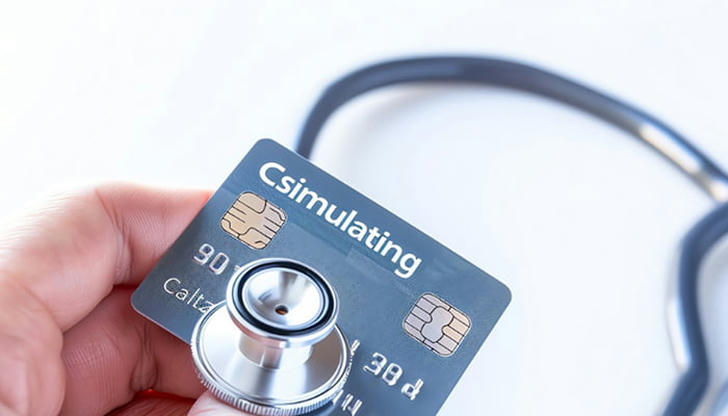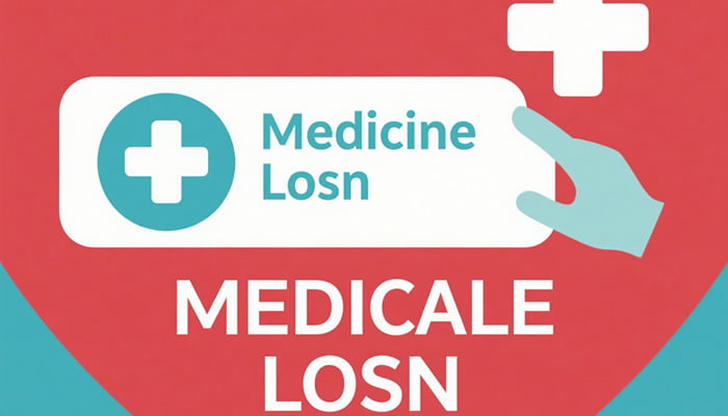Medical Loans and Medical Credit Cards: What to Know Before You Sign Up

The Biden administration has proposed removing nearly all medical debt from consumer credit rating calculations. This could be a lifeline for many people who struggle with credit-based purchases while juggling medical bills.
However, this reform may not help the growing number of people using medical credit cards or medical loans to pay for healthcare. Between 2018 and 2020, Americans used these financing methods to cover nearly $23 billion in medical expenses, according to the Consumer Financial Protection Bureau (CFPB).
Medical loans and credit cards can make large healthcare bills more manageable. But like any form of debt, they come with strings attached. Here’s what you need to know before you sign on the dotted line.
What’s the Difference Between Medical Credit Cards and Medical Loans?

Both are financing tools specifically designed for healthcare-related costs. These days, they’re often accepted for everything from basic copays and emergency visits to elective surgeries and cosmetic procedures. But they work quite differently.
Medical Credit Cards: The Basics

Who Offers Them?
Major financial companies such as Synchrony Financial, Wells Fargo, and Comenity Capital Bank offer these cards.
What Can You Use Them For?
Think of them like store credit cards—usable only at certain healthcare providers, for medical-related expenses.
How Much Can You Borrow?
Limits vary depending on your credit score.
What’s the Interest Rate?
The average APR is 26.99%, compared to about 20% for a general credit card.
Be Careful:
Christine Benz, director of personal finance at Morningstar, warns that the high interest makes them risky.
“These types of financing may look like a convenient way to cover medical bills, but with interest rates that are generally worse than credit cards’, it’s hard to see a case for them,” she says.
“The only reasonable use case would be if special terms are on offer and you know you can pay off the debt before the high interest kicks in.”
Medical Loans: The Basics

Who Offers Them?
Many banks, credit unions, and online lenders.
What Can They Cover?
These loans can be used for planned treatments, emergencies, or even high deductibles and out-of-network care.
How Are They Structured?
Medical loans are often installment loans, issued before a specific procedure and only for that treatment.
How Much Can You Borrow?
Anywhere from $1,000 to $200,000 depending on the lender.
What’s the Interest Rate?
Rates vary wildly—from 6.99% to 35.99%. Payment terms can range from six months to several years.
Important to Know:
Sheryl Rowling, editorial director at Morningstar, says:
“Getting a loan like that is like getting any other type of high-cost consumer debt. Overcoming the interest is going to be the biggest hurdle. And if there are other ways around it, those ways should be explored.”
Watch Out for Deferred Interest Traps
Medical credit cards and loans often promote 0% interest offers for a set period (usually 6–12 months). Sounds great, right?
Here’s the catch: Deferred interest isn’t waived—it’s postponed. If you miss a payment or don’t pay off the full balance by the end of the promo period, all that interest gets added back—retroactively. That can be a nasty surprise.
Benz explains:
“The only way to use them well is to do so from a position of financial strength. For example, if there are special terms on offer, such as 0% free financing for the first year, make sure that you’ll have the funds to pay back the loan or credit card when that free financing period expires.”
Is It Medical Debt? Technically, No.
Even though these loans and cards are used for medical expenses, they’re issued by financial institutions—not medical providers. That means they’re not classified as medical debt.
This matters because recent rules to protect consumers from medical debt on credit reports don’t apply here. If you fall behind, this debt can be sent to collections and may hurt your credit score.
Consider Alternatives First
Before jumping into a medical credit card or loan, explore these options:
1. Talk to Your Healthcare Provider
Rowling recommends asking the provider about in-house payment plans, which often have little or no interest and more flexibility.
“Frequently, medical facilities will accept a lower amount if you’re able to pay it all at once,” she adds.
2. Save in Advance
If your treatment is elective and not urgent, consider saving in an HSA or FSA account.
Benz suggests:
“In the case of an elective procedure that can wait and is HSA- or FSA-eligible, another idea is to save in those accounts in advance of the planned procedure.”
Bottom Line
Medical loans and credit cards can offer short-term relief—but they’re not always the best solution. Look closely at the fine print, especially around interest rates and repayment terms. And whenever possible, talk to your medical provider about better, lower-cost alternatives.
